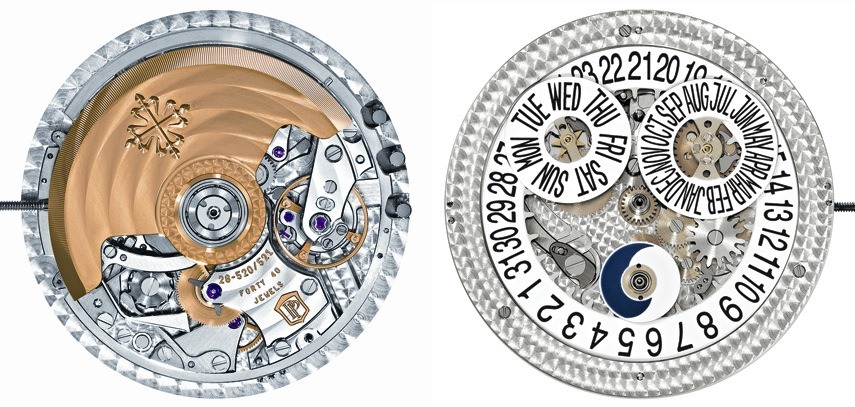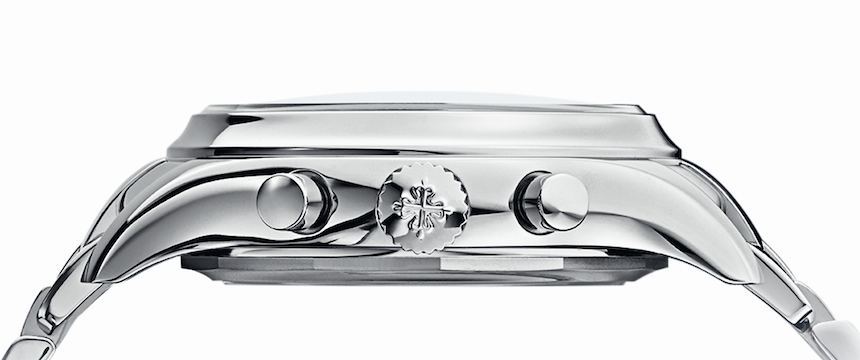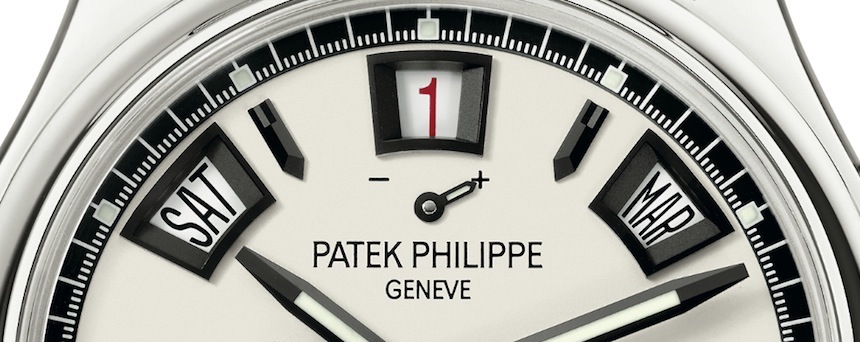
The movement inside (and take a deep breath now) is the completely in-house manufactured CH 28-520 IRM QA 24. That translated into watch-terminology means that the movement comprises a flyback chronograph, an annual calendar, a power-reserve indication (for what the brand notes as anything between 45 and 55 hours, likely depending on for how long the chronograph is in operation), and also a day-night indication. Its base movement contains 302 components, while the clever (and only 2.48 mm thick) annual calendar module adds another 154 parts to that. And while we often discuss perpetual calendars–calendars which require absolutely no adjustments until the year 2100–annual calendars mean a smart transition between them and the classical calendars.
What annual calendars do is that they can distinguish months which are 30 or 31 days long and hence they require adjustments by the user only once every year, on the 1st of March. Less complicated and less expensive to make than their perpetual counterparts, they make for an interesting and very user-friendly function which also carry significant horological heft, if there ever was such a thing. To make all this controlled mechanical madness just a tad more personal, the number “1” on the date disc of the 5960/1A will be painted red, while all other figures will be the standard black on white. And while that is about as intimate as Patek gets, its a drop of confidentiality between the piece and the owner in the ocean of cool and calculated elegance.

And since this caliber was the first in-house made chronograph by Patek, it should come as no surprise that it won’t allow this complication to lag behind some fancy calendar module! Equipped with a vertical clutch, the “stopwatch” function can be used for as long as the wearer desires, as this design assures that key components are not subjected to the increased wear and tear that is present in case of more traditional chronographs. Its accuracy is secured by Patek’s own patented Spiromax balance spring made of Silinvar (a term that practically covers silicon).
The result of all this patented and long-researched technology is an antimagnetic balance wheel with arguably superior isochronous properties and hence better rate results in the long run. That, by the way, is something that comes in handy as the Patek Seal (the brand’s own quality-checking program that ensures thorough technical and aesthetic controlling of all its watches) requires a movement of this size to perform with an accuracy of -3 to +2 seconds per day.
 In summary, as we look at the powerful package which the 5960 undoubtedly is, we can say that Patek made a bold decision when they said that they are dropping all precious metal versions of what is an extremely modern and also rather important calendar-chronograph in the history of the company. Their determination is further exemplified by the way they lent a number of sometimes intangible, although still very effective modifications to the original model from 2006. What we are left with is the 5960/1A, a watch from Patek Philippe which is from now on not only one of the technically most impressive piece in their collections, but also one of the most controversial as well.
In summary, as we look at the powerful package which the 5960 undoubtedly is, we can say that Patek made a bold decision when they said that they are dropping all precious metal versions of what is an extremely modern and also rather important calendar-chronograph in the history of the company. Their determination is further exemplified by the way they lent a number of sometimes intangible, although still very effective modifications to the original model from 2006. What we are left with is the 5960/1A, a watch from Patek Philippe which is from now on not only one of the technically most impressive piece in their collections, but also one of the most controversial as well.
The 5960/1A, as the “/1/ in its reference suggests, will be available only on the Patek “drop links” bracelet in stainless steel and will retail for 45,000 Swiss francs, or around $54,800. patek.com






